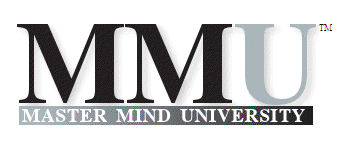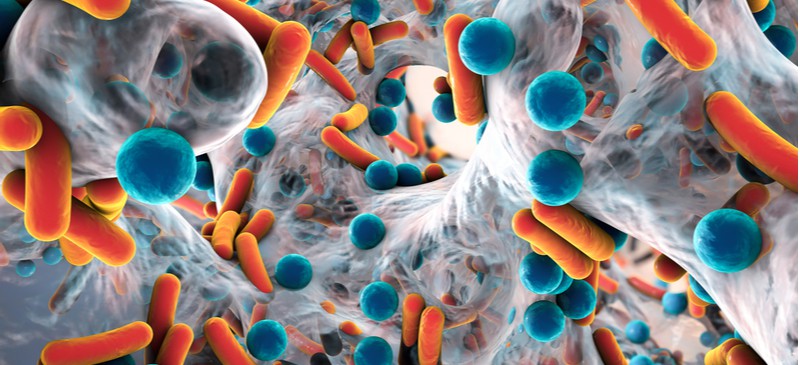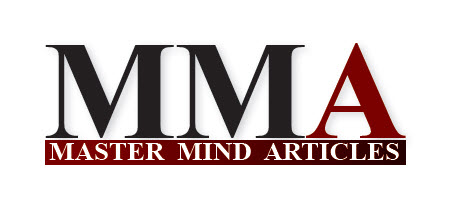 Knowing Why from the Field of Master Mind Biology (MMBIO)
Knowing Why from the Field of Master Mind Biology (MMBIO)
Shared from the research of: Joseph Mercado
Article Author: Isaac Eliaz, MD
Content Source: Dr. Axe
To: Health Lover
Blog Post #1177
Re: Biolfilm
Date and Time: Friday, June 18, 2021 at 1:44 a.m.
Dear Health Lover,
As an integrative, holistic physician, it’s not uncommon to see complex patients who have been “failed” by conventional medicine.
They’ve tried every option to address their condition, with no success.
Standard drug protocols and alternative therapies have proven futile, leaving doctors scratching their heads — and patients feeling powerless.
Often, they’re struggling with some sort of mystery illness causing vague symptoms like fatigue, brain fog and digestive complaints for years.
However, groundbreaking research in a fast-growing field of medicine may have an answer — offering critical insights into the increasing problems surrounding “mystery illnesses” and “treatment resistance.”
Most importantly, new findings have identified a critical therapeutic target that can reverse this potentially life-threatening situation — allowing drugs therapies and the body’s own immune cells to do what they’re supposed to: Heal us.
From chronic Lyme disease and drug-resistant MRSA, to atherosclerosis, chemo-resistant cancer and undiagnosed mystery conditions, patients who are struggling to find solutions may share a common thread: Biofilms within the body.
Biofilms are physical barriers that form around infections, tumors and other areas of injury and illness in the body.
In some respect, they represent one of the body’s survival strategies: To isolate problem areas so they don’t spread.
But, paradoxically, biofilms create a type of shield that prevents drugs, therapeutic agents and the immune system from reaching the affected area.
This is why, despite aggressive treatments, many patients don’t get better — until biofilms are addressed.
Many biofilm structures in the body are formed by colonies of different harmful microbes as their own protection — a key survival strategy of these organisms themselves.
Common offenders include H. pylori, species of Candida and other fungi, E. coli, dental plaque and other microbial and parasitic species, including Lyme disease.
Many of us live with them unknowingly, attributing vague symptoms to other causes.
These microbes secrete a gel-like substance which binds to sugars and proteins, heavy metals, minerals and other substances in the body to form a sticky, tenacious, pro-inflammatory armor behind which toxins, bacteria, fungi and parasites can hide.
Biofilms interfere with detoxification and nutrient absorption, promote and protect co-infections, create arteriosclerotic plaque, and give cancer cells a place to hide.
Imagine the slime trails left by slugs and add in calcium, heavy metals and toxins, and other components to create structural strength.
Tiny canals within the matrix allow nutrients and messages to pass between organisms, which signal to each other to make complex decisions that promote their growth and survival.
Organisms enmeshed in a biofilm community are much more resistant to antimicrobial therapies than their free-living counterparts.
They are also able to sense what’s going on in their surroundings and become more invasive when their host is weak.
Galectin-3: The Backbone of Biofilms
There is one protein in our body that contributes significantly to the formation of biofilms: The pro-inflammatory protein called galectin-3 (Gal-3).
This sticky binding protein gets expressed into the circulation in response to illness, infection, injury, stress, aging and other factors, but subsequently, it becomes a driver of chronic inflammation, tumor growth and metastasis, fibrosis and immune suppression.
Gal-3 has a unique shape that allows it to bind to itself and form pentamers, which then bind to other pro-inflammatory compounds to create dense lattice structures.
These Gal-3 lattices are what form the backbone of biofilms.
Tumors can also use Gal-3 to shield the tumor microenvironment, allowing the cancer to protect itself from drug treatments and immune surveillance.
Addressing Biofilms:
Addressing biofilms represents a key strategic approach to resolving persistent infections as well as cancer and other chronic, inflammatory conditions.
The best way to address biofilms is with specific antibiofilm agents and detox therapies that are shown to help to break up the biofilm structures and allow other treatments — conventional or complementary — to reach their target tissues.
Modified Citrus Pectin:
The most important natural detox and protection supplement that’s proven to block Gal-3 is a form of modified citrus pectin (MCP) — a clinically researched ingredient derived from regular citrus pectin and modified for a high degree of bioactivity against numerous conditions.
I use MCP extensively in my practice to address Gal-3 in cancer, cardiovascular and kidney disease and many other conditions. This MCP is the only known agent able to bind and block the pro-inflammatory, pro-fibrotic and cancer-promoting actions of Gal-3 and is shown through extensive research to halt and reverse the impacts of Gal-3 in critical illnesses.
Because this MCP binds and blocks Gal-3 and interrupts its biofilm lattice formations, it’s been shown in multiple studies and clinical application to synergistically enhance the effects of other drugs and therapies — from chemotherapy to antibiotic treatments.
It’s also a powerful detoxification and heavy metal binder often used in biofilm protocols as a “mopping agent” to clean up the byproducts of disrupted biofilms and microbes. Heavy metal toxicity is often linked to biofilm formation and chronic infection, which makes MCP another key element in the success of these protocols.
Certain Edible Mushrooms:
Research shows that certain edible mushrooms may offer important antibiofilm and antibacterial activities, inhibiting the formation of biofilms by common bacteria, and preventing them from adhering to tissues and forming complex colony structures.
Of the varieties tested, Trametes versicolor mushroom — one that I use extensively in my practice — showed the highest antibiofilm and antibacterial activity.
Alginates from Kelp:
Additional research shows that alginates, derived from kelp seaweed, have the ability to break up biofilms formed by gram-negative bacteria. Low molecular weight alginates are often used in GI health protocols, and I also use them in my clinic as part of detoxification formulas to help remove toxins and microbial infections in the GI tract.
Enzymes and Probiotics:
Advanced enzyme formulations are often used to break down and dissolve the biofilm matrix.
The enzymes are usually given on an empty stomach, prior to giving a specific antimicrobial therapy — either pharmaceutical agents, botanicals or both.
Probiotics are given separately; they exert their own protective effects to support digestive health and help restore balance to the digestive system.
Final Thoughts on Biofilms:
By incorporating specific agents to strategically address the issue of biofilms, treatments become more effective and easier to tolerate. Successful treatment of biofilms in the body can allow practitioners and patients to finally triumph over persistent, health-robbing infections and conditions.
Chronic infections are often a looming factor behind complex disorders such as autism spectrum disorder, chronic fatigue syndrome and fibromyalgia.
Biofilm treatment is showing promising success with these and other conditions, including integrative Lyme treatment, particularly when combined with other targeted nutrients and compounds to restore health and vitality.
Isaac Eliaz, MD, MS, LAc has been a recognized expert in the field of integrative medicine since the early 1980s, with a specific focus on cancer, immune health, detoxification and mind-body medicine. He is a respected formulator, clinician, researcher, author and educator. As part of his commitment to the advancement of integrative medicine, Dr. Eliaz partners with leading research institutes and has co-authored numerous peer-reviewed papers on innovative therapies for immune enhancement, heavy metal toxicity and cancer prevention and treatment. He is founder and medical director of Amitabha Medical Clinic and Healing Center in Santa Rosa, CA, where he and his team of practitioners pioneer individualized treatments for cancer and chronic illness.
Content Source: Dr. Axe

 Email Us a Message
Email Us a Message 

Please send us a personal message below and we will serve you momentarily.
We appreciate you visiting the MMU Global Research Directory
For more blog posts, videos, articles, and to generate more knowledge, please feel free and…





 Fly Over to the MMU Facebook Page with Hoot
Fly Over to the MMU Facebook Page with Hoot
 Visit the MMA Facebook Group Today
Visit the MMA Facebook Group Today 